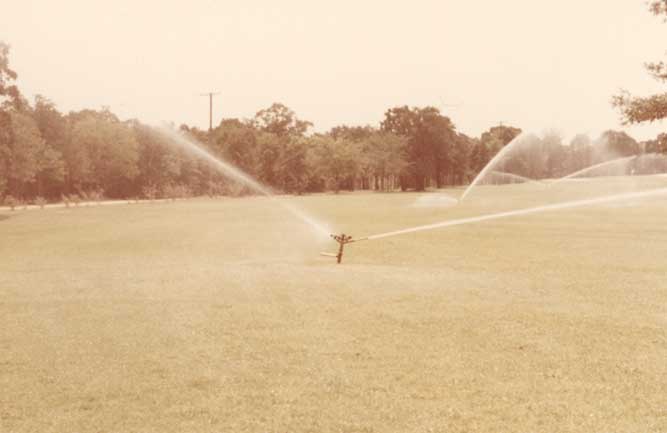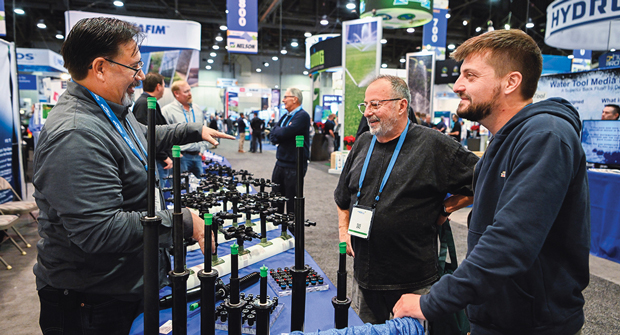What’s the worst job I ever had on the golf course?

One good thing about these old impact sprinklers was that they could really throw some water! In my case, the system was one line down the middle of the fairway with snap valves spaced about every 80 feet. (Photo: Jim Moore)
Like most people that made their careers in golf course maintenance, I started with a weed eater and gradually learned many different skills over the years. While every job had its pluses and minuses, by far the worst job I ever had was night waterman. Hopefully, golf course irrigation has progressed so far that many who read this will not know why I consider this “the worst job in golf” so I’ll share a typical night’s work.
The course I worked on was in central Texas and had a maintenance budget less than most superintendent’s salaries these days. As the night waterman, my shift was typically sunset to sunrise.
The pump “station” was one 50 HP motor and a clay valve that could generate a maximum of about 500 gpm. This meant I could run only 10 to 15 sprinklers at a time. Since there were no pressure controls, the first task of a typical night’s fairway watering was to place a quick coupler sprinkler on each of the par 4’s and par 3’s. Next, it was over to the pump station to turn on the motor to pressurize the system and then watch the sprinklers go from a stream more typical of a garden hose to something that actually could do some good. Now the fun began.
After 30 minutes or so, I headed out to No. 1 in my ancient three-wheel Cushman truckster with a weak light and weaker brakes. I would disconnect the sprinkler and move it to the next valve. I was then off to No. 2 to repeat the process, which of course, was followed by No. 3, No. 4, and so on until I had moved sprinklers on all 14 fairways. Once a par 3 was finished, that sprinkler would be moved to the first par 5.
Obviously, the amount of water applied was not based on any agronomic principle but rather on how long it took me to make the rotation. Typically, my route would take 30 to 45 minutes depending largely on how many stuck snap valves I would have to reseat and how often I had to clear trash from the nozzles that had been sucked up from the irrigation lake.
It was a long, miserable night. In addition to getting surprisingly cold (since it was impossible not to get soaking wet), various critters, mosquitoes and bugs in your eyes were your only companionship. You could try to carry a Walkman for music but they were expensive and not waterproof. As bad as the night was, the worst part was going to class the next day and trying to stay awake as Dr. Beard discussed the need to consider plant physiology, evapotranspiration, and soil types when determining how much water to apply. I felt like we were living on different planets!
I eventually was hired as the superintendent of this same course and not surprisingly the toughest job to fill was night waterman. They would typically last only a few weeks so I often had to fill in the gaps. When I finally landed a superintendent’s job at a course with automatic irrigation, I thought I had died and gone to heaven!












